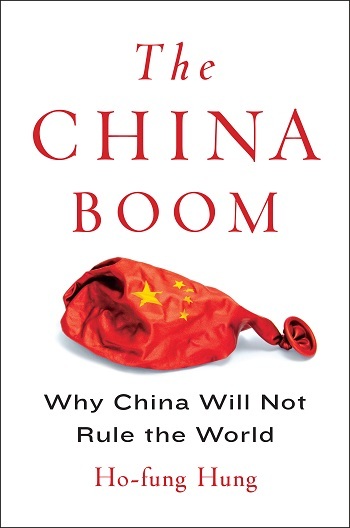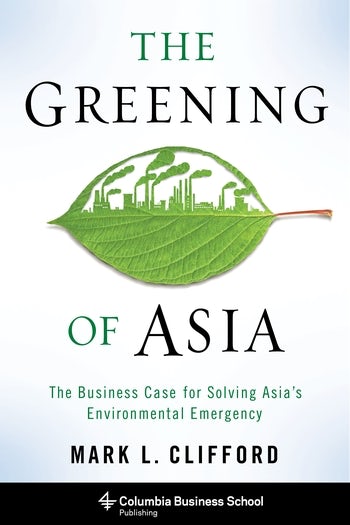RMB Inclusion into SDR: Hyperbole and Reality
The following is a guest post by Ho-fung Hung, author of The China Boom: Why China Will Not Rule the World:
RMB Inclusion into SDR: Hyperbole and Reality
By Ho-fung Hung
As widely expected, IMF decided on Monday to accept RMB, the Chinese currency, into the currency basket that made up its Special Drawing Rights (SDR), rendering the RMB the fifth currency in the basket after USD, euro, British pound, and Japanese yen. Predictably, many will hail the inclusion as a triumph of China’s global financial power, even though they might never hear of SDR until last month and still don’t know what SDR exactly is. If we put RMB’s inclusion in the SDR in its proper historical and global context, we would find that such inclusion does not actually mean much to the Chinese and world economy in the long run. It may even bring some immediate troubles to China’s slowing economy.
The Rise, Fall, and Brief Revival of SDR
IMF created the SDR in 1969 to solve the problem of the inadequacy of hard currencies, such as US dollar and gold, necessary to maintain the Bretton Woods monetary order. Such order was constructed in the Bretton Woods Conference of 1944 and was anchored on the gold convertibility of USD under 1 ounce of gold to 35 USD rate, as well as fixed exchange rates of major currencies with the USD. To warrant the stability of this order, central banks of major capitalist countries needed to accumulate sizeable foreign exchange reserves so that they could intervene to protect their currencies’ peg with the USD at times of currency crisis. The rapid expansion of the world economy in the 1960s fomented a shortfall of USD and gold that jeopardized the stability of the Bretton Woods order. The invention of the SDR is an IMF attempt to tackle such shortfall.
SDR is not a currency. It is an accounting unit the value of which is determined by the values of currencies in its currency basket. The composition of the basket and the weight of each constituent currency are determined by the IMF. SDR cannot be used to purchase goods and services, and it can only be traded among central banks. The IMF occasionally created certain amount of SDR out of thin air to meet the perceived need of the world economy. It then allocated the newly created SDR to its member countries according to their relative economic standing. The central bank of a country can use its SDR to purchase hard currencies within the SDR basket from another country, or it can use its currencies holdings to trade for more SDR. The interest arrangement of the SDR is such that a country holding more SDR than its allocated quota could earn an interest, while a country holding less SDR than its quota needs to pay interest. This arrangement enables countries caught in a currency crisis to trade its SDR for hard currencies with countries interested in accumulating more SDR to earn interest. Given this mechanism, countries can displace hard currencies with SDR in their foreign exchange reserve mixes, increasing their foreign exchange reserves and hence their capability to maintain their currencies’ fixed exchange rate without increasing the global demand for hard currencies.
Two years after the invention of the SDR, nonetheless, Nixon abolished gold convertibility of the dollar. By 1973, the Bretton Woods world monetary order had collapsed and major world currencies had moved back to free floating. The world’s urge to accumulate foreign exchange reserves dwindled, and the SDR became much less relevant. Currently, the total amount of SDR circulating in the world economy amounts to only 0.28 trillion when measured in USD. It is a mere 2 percent of the value of the 12 trillion dollar total foreign exchange reserves in the world. The composition of the SDR basket changed multiple times over the years. Canadian dollars, Australian dollars, South African rand, Saudi Arabian riyals and Iranian rials were once in the basket. They came and went without many people noticing and remembering. It attests to the insignificance of the SDR in the world monetary system.
The long forgotten SDR made to newspaper headlines again in 2009, in the wake of the financial breakdown in the US that unleashed a global fear about an imminent collapse of the USD among large holders of USD assets in their reserves, China in particular. In March that year, Zhou Xiaochuan, the head of China’s central bank, issued a statement to call for increasing the use of SDR and the replacement of USD with the SDR as the leading world reserve “currency.” Zhou also advocated an expansion of the SDR currency basket so that its stability will be less dependent on the financial health of any particular countries. In November 2011, the then Chinese President Hu Jintao amplified such advocacy by incorporating it as the centerpiece of his proposal to reform the global financial system in his speech at the G-20 Summit.
Beijing’s Campaign for SDR
Beijing’s proposal of replacing the global dollar standard with an SDR standard coincides with Beijing’s effort to push for a RMB inclusion into the SDR basket. The push is similar to Beijing’s campaign to seek to host a Summer Olympics and to enter the WTO in the 1990s. The Chinese leaders must have assumed that a RMB inclusion into the SDR will be tantamount to an official endorsement by the IMF that RMB is as reliable and liquid as USD, euro, the pound, and the yen as a reserve currency. Such endorsement could increase world demand for the currency, inducing capital flow into China that could give a new boost to the Chinese economy. The symbolic pride of getting the RMB recognized as a peer of USD and euro will also benefit the Chinese Communist Party’s legitimacy in the eyes of its people. From the vintage point of IMF insiders who favor RMB inclusion, such inclusion could encourage Beijing to further liberalize its financial system and capital account to make RMB fully convertible. But in 2010, in its 5-yearly review of SDR basket composition, the IMF rejected the inclusion of the RMB, as it concluded that the RMB has not met the “freely usable” criteria of SDR constituent currency. According to IMF definition, a freely usable currency is one that is “widely used to make payments for international transactions,” and is “widely traded in the principal exchange markets.”
The IMF designation of the RMB as not freely usable in 2010 is hardly surprising. China’s financial system has been insulated from the global financial circuit as Beijing maintains tight foreign exchange control as a safeguard against volatile financial flow and against erosion of the Communist Party’s command of the economy through its control of credits and deposits. After 2010, Beijing redoubled its effort to make the RMB fulfill IMF technical requirements for inclusion into the SDR. The tricky part is how the Communist Party could meet the requirements without forfeiting its control of China’s financial sector.
By early 2015, it became apparent that Beijing had hit jackpot, and the IMF started to signal that it was on the way to certify that the RMB had fulfilled the requirements. The data most widely cited as proof of RMB’s “free usability” is that the use of the RMB in international payment has shot up from below the top 15 currencies in 2011 to the fifth rank as of September 2015, just trailing behind USD, euro, the pound, and the yen. This appears to be an impressive achievement. But a more careful look into the data shows that the fifth rank of RMB represents only 2.45 percent of all international payment, still way far below the 43.3 percent for USD and 28.6 percent for the euro.

More importantly, among those 2.45 percent of international payments carried out in RMB, 70 percent are transactions done in Hong Kong – a former British colony that became an offshore market under Chinese sovereignty with its own USD-pegged currency and a façade of autonomy despite Beijing’s increasing control of its financial sector.

RMB is Not as Internationalized as It Appears
In other words, the internationalization of the RMB that makes the currency fulfil the IMF technical requirements is mostly about the RMB-ization of the Hong Kong economy so far. It involves the increase of RMB deposits in Hong Kong banks, sales of RMB-denominated “dim sum bonds” in Hong Kong, and the “through train” Hong Kong-Shanghai stock arrangement, etc.. The increasing use of RMB in Hong Kong has been carefully managed by Beijing under a quota regime. As such, RMB’s “free usability” in the world is in large part attributable to its “free usability” in Hong Kong, and China’s opening of capital account to the world is mostly its controlled opening to Hong Kong. The “free usability” of the RMB is way different from the “free usability” of the existing currencies in the SDR basket. RMB remains not fully convertible, and China’s capital account remains quite impermeable.
It follows that RMB’s inclusion in the SDR is largely symbolic and will not bring much substantive impact on the currency. The global demand for any currency is mostly determined by its convertibility and liquidity, on top of the fundamental health of the issuing country. The Japanese yen has always been in the SDR basket, yet its international standing moved up and down widely over the past several decades. The rising global demand for Australian dollar, which is not in the SDR basket, during the commodities boom over the last decade is another case in point. The substantive significance of RMB inclusion into the SDR further diminishes given the rapid revival and strengthening of the USD as a reserve currency. When the US economy recovers and the world demand for the greenback surged after 2011, most of the doubt about the global dollar standard had been dispelled. The once prevalent expectation that the USD will one day be supplanted by the SDR as the leading reserve currency in the world economy looks quite outlandish now.
The impact of RMB inclusion into the SDR is less significant than most expected. More, the inclusion may well bring some new immediate problems to the Chinese economy. Many institutional investors around the world have been betting that after IMF formally announces the RMB inclusion, China’s central bank will lose its incentive to burn foreign exchange reserve to stabilize the RMB value and will let the RMB fall more freely. This expected policy shift, coupled with a sustained weakening of the Chinese economy, leads many to speculate that the RMB will devalue substantially after the IMF decision. Such devaluation can become more drastic after the US Federal Reserve raises interest rate as expected in December. This imminent rate hike is poised to creating a vortex that sucks in capital from all over the world, accelerating capital flight from the emerging economies including China.
Beijing’s campaign for RMB inclusion in the SDR and its final success is far from a game changer in itself. In the years to come, we may look back to Beijing’s ordeal to get RMB into the SDR basket as a risky maneuver that seeks world prestige at the expense of financial stability. It may turn out to be like China hosting the Summer Olympics in 2008 – an event that invoked world-wide respect and excitement at the time but fostered little lasting change except the hangover.






1 Response